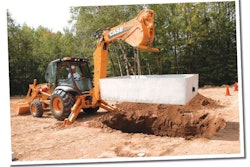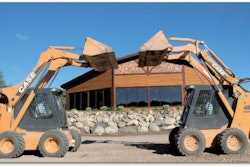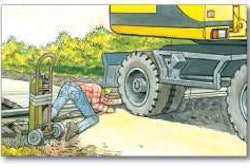Demolition dangers
Know what you’re getting into before you begin
By Equipment World Staff
The accident: A construction crew was demolishing an addition to a school building when a roof collapsed, seriously injuring two workers.

Hidden hazards
In addition to the usual hazards, construction workers face, demolition work often presents unknown factors. Because you’re taking apart a structure someone else built, it may be difficult for you to accurately determine your risk level. Therefore, the OSHA standard governing demolition requires the contractor have a competent person perform an engineering survey to determine the structural condition of the structure, as well as any adjacent structures. Your employer is required to have written evidence the survey has been completed. This survey will not only alert you to structural problems, but should also inform you of any hazardous materials such as chemicals or explosives that may have been used or stored on the site.
Proactive prep
There are a number of ways you can make yourself safer on a demolition site. Take the time to address the following questions:
• Is it a multi-story building? Remove exterior walls and floors from the top first and then work downward.
• Are floors or walls damaged? If so, brace them or shore them up.
• Are you working on upper floors? Choose the appropriate personal protective equipment to secure you in the event of a fall. Inspect the equip- ment closely prior to use.
• Are utilities functioning? Shut off or cap all electric, gas, water and other service lines and notify utility companies.
• How are you dropping debris to the ground? Use an enclosed chute with a gate on the discharge end. Floor openings used for material dis- posal must be smaller than 25 percent of the total floor area.
• Are you using equipment inside? Guard wall openings to a height of 42 inches; ensure the floor can withstand the combined weight of man and machine.
• Does the building have ornamental work? Remove all decorative stonework before pulling the walls down.
• Where are the load-supporting members? Don’t cut or remove them until all stories above have been removed.
• Do structural collapse hazards exist? Don’t begin work until they are supported by shoring or bracing. EW
Information for this Safety Watch came from an accident, OSHA standard 29 CFR 1926 Subpart T (Demolition) and Diven, Richard J. and Mark Shaurette. Demolition: practices, technology and management. Chapter 8, p. 95-101. Purdue University Press.
It is meant for general information only.












